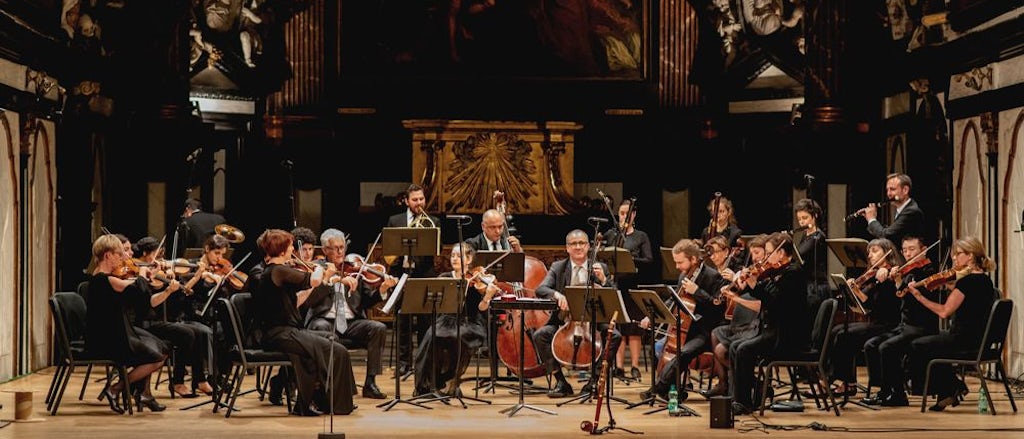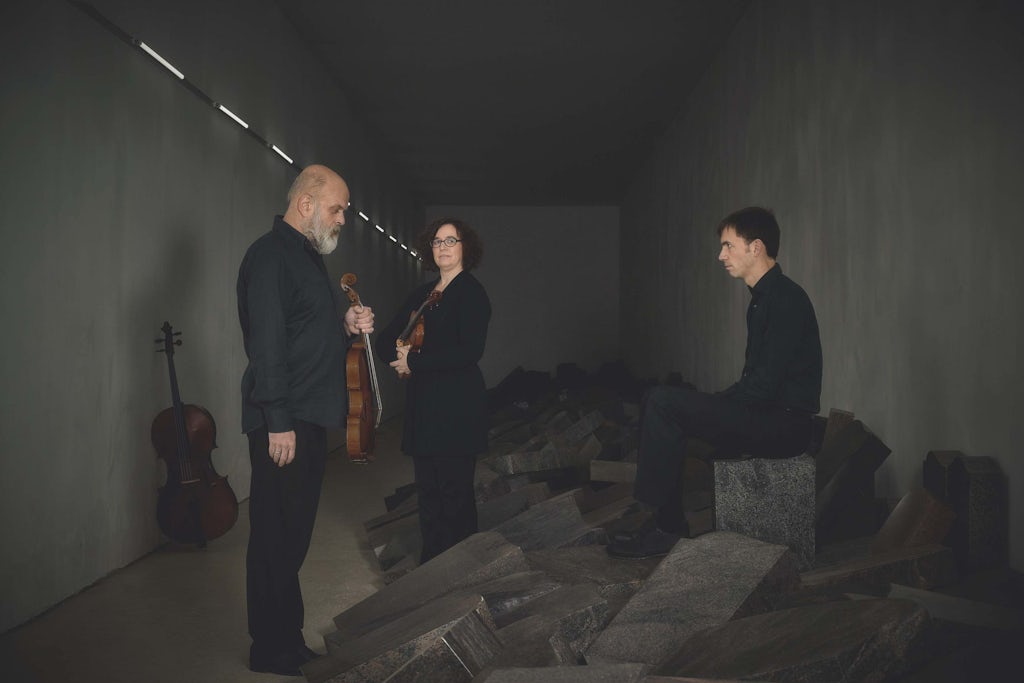
Ga naar het overzicht
Bekijk een korte, niet-exhaustieve lijst van artiesten en ensembles.

Goeyvaerts String Trio (c) Hans Morren
A short who’s who of Flemish chamber music developed in the context of Chamber Music America 2019
In an essay on early and new music – published in this small booklet by Flanders Arts Institute – Rudy Tambuyser writes about the rich tradition of chamber music in Flanders. In the excerpt below, Tambuyser mentions a few examples.
“This rich Flemish tradition in chamber music is undoubtedly presented at the highest level by the quintet Het Collectief. Also from Brussels, and from its history associated with Het Collectief, is the larger ensemble Oxalys, established in Flanders’ rather magical cultural year 1993. In terms of spirit and notes, Oxalys had the French chamber repertoire of the late 19th and early 20th centuries as a starting point, but expanded its range of activity in a sensitive manner.
Still very young as an ensemble, but equally promising, is the Taurus String Quartet. Four seasoned chambrists who, after having experienced almost all other repertoires, decided to extensively explore the royal genre of chamber music.
The Goeyvaerts String Trio, with home base in Sint-Niklaas, has charted an impressive course in recent years. It focuses on the large repertoire of mainly the late 20th century. I Solisti del Vento, the brainchild of top bassoonist Francis Pollet, was originally a woodwind formation that is at home in virtually every style. They have many creations to their name and have been occupied to no small extent with musical theatre in recent years.
Most Flemish woodwinds of any significance once worked with I Solisti one way or another. Among them the excellent soloists Piet Van Bockstal (see also Ictus, deFilharmonie, and many other ensembles) and clarinetist Vlad Weverbergh ‒ founder of the Antwerp ensemble Terra Nova and more recently, often in the company of the Prague Collegium 1704. An exception to that rule is Benjamin Dieltjens, once a founding member of Het Collectief and one of the most well-rounded musicians in his discipline ‒ he plays baroque on basset horn to avant-garde on modern clarinet, from concertos for orchestral pieces (at deFilharmonie) to chamber music. He forms a duo together with his brother Thomas Dieltjens, and is without a doubt one of the most remarkable and respected pianists of his generation.
Having arrived at the pianist front, here we will certainly mention Julien Libeer, one of those rare young people that appear to be succeeding in the world of pianos without participating in competitions. He can call himself a protege of the great Maria João Pires.
A few years older are Nicolas Callot and Lucas Blondeel, who, incidentally, form the aptly named Pianoduo Callot-Blondeel. Both pianists are also fervent accompanists and have been increasingly interested in historic pianos in recent years.
From the same, let’s call it Antwerp, vibe comes Nikolaas Kende, son of the Hungarian-Belgian doyen Levente Kende, and professor at the Antwerp Conservatory. He forms a chamber music duo with the excellent violinist Jolente De Maeyer.
With all this emphasis on exponents of the younger generation, we must not forget the more established ones ‒ not seldom the instructors of the former: the already mentioned Jan Michiels; Piet Kuijken, according to his family tradition above all interested in historic pianos; the international Schumann and Brahms authority and fantastic accompanist Jozef de Beenhouwer.
Kunstenpunt maakt je wegwijs in het Vlaamse kunstenlandschap via online gidsen en thematische sites rond hedendaagse dans, podiumkunsten voor een jong publiek, fotografie, koormuziek in de 21ste eeuw …
Welke thema’s of dossiers onderzoekt en analyseert Kunstenpunt? Welke thema’s bepalen straks de toekomst van de kunsten in Vlaanderen en Brussel? Ontdek hier het overzicht.